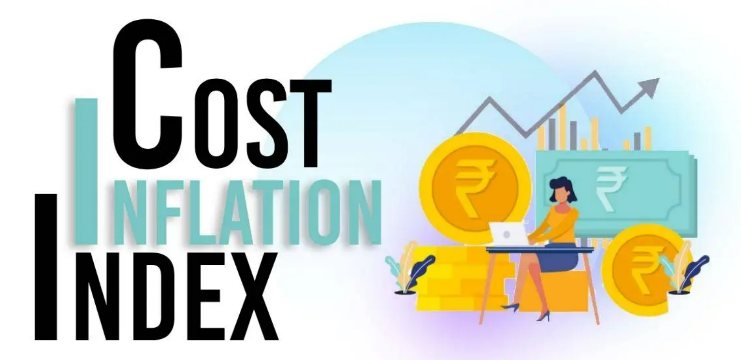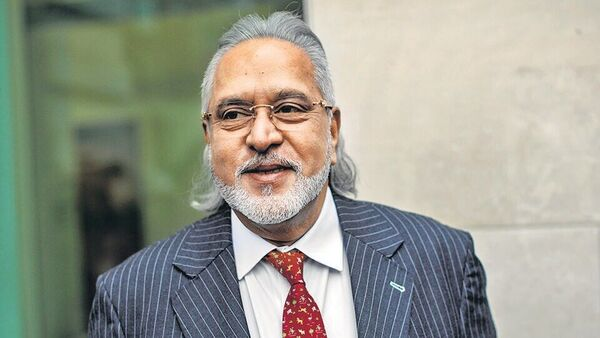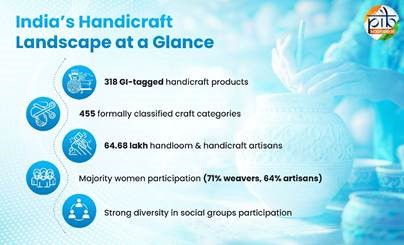Description

Disclaimer: Copyright infringement not intended.
Context
- The Income Tax Department has notified the Cost Inflation Index for the current fiscal beginning April 2023, for calculating long-term capital gains arising from sale of immovable property, securities and jewellery.
MUST READ:
Long-Term Capital Gains Tax - https://www.iasgyan.in/daily-current-affairs/ltcg
Indexation: https://www.iasgyan.in/daily-current-affairs/ltcg
About Cost Inflation Index
- Cost Inflation Index or CII is a tool used in the calculation of an estimated yearly increase in an asset’s price as a result of inflation.
- The Central Government fixes this index and publishes it in its official gazette for measuring inflation. This index, notified each year by the Government is defined under Section 48 of the Income Tax Act, 1961.

What is the purpose of CII?
- As per the IT Act, CII is the measure of inflation used to adjust the cost of acquisition of an asset to calculate the capital gains tax liability.
- It is published by the Central Board of Direct Taxes (CBDT) annually and is based on the Consumer Price Index (CPI).
- The CII calculates the indexed cost of acquisition of an asset, which is the actual cost of acquisition adjusted for inflation. This adjustment is made to account for the impact of inflation on the value of the asset over the years.
- By adjusting the cost of acquisition for inflation, the indexed cost of acquisition is higher than the actual cost of acquisition, lowering the capital gains tax liability.
- The concept of CII is especially useful for taxpayers who have held an asset for a long period, as the indexed acquisition cost helps reduce their tax liability. Individuals planning to sell an asset can use the CII to calculate the capital gains tax liability on the asset’s sale.
- Overall, the Cost Inflation Index plays a significant role in India's taxation system, helping taxpayers calculate their tax liability fairly and accurately.
Meaning of ‘Base Year’ in CII
- The ‘base year’ in the Cost Inflation Index refers to the year from which the index is calculated. It is the year which is used as the reference point for determining the rate of inflation in the subsequent years.
- For example, if the base year for the CII is 2001-02, then that year's index value is considered 100. The CII values for the subsequent years are then calculated based on the rate of inflation from the base year.
- So, if the CII for 2022-23 is 316, the cost of goods and services has increased by 216% since the base year (100+216).
- The base year is important in the computation of the indexed cost of acquisition of an asset, which is used to calculate the capital gains tax liability.
- The indexed cost of acquisition is calculated by adjusting the actual cost of acquisition with the help of the CII of the year of acquisition and the year of sale of the asset. The CII of the base year is used as a reference point to determine the inflation rate over the years, which helps calculate the indexed cost of acquisition.
- Overall, the base year is an important reference point in the computation of the CII. This is used to adjust an asset’s acquisition cost for inflation and provide a more accurate measure of capital gains tax liability in India.

Calculation of CII in India
- The Cost Inflation Index is calculated by the Central Board of Direct Taxes (CBDT) and is based on the Consumer Price Index (CPI) for industrial workers. The CPI is the measure of change in the price of a bunch of goods and services consumed by a specified group of people. This is used to compute the rate of inflation.
The CII for a given financial year is calculated as follows:
CII = [(CPI for the year of calculation)/(CPI for the base year)]*100
- Let’s take an example. Suppose you bought an apartment for Rs. 20 Lakhs in January 2000 and sold it for Rs. 35 Lakhs in January, 2009. Your capital gain/profit is Rs. 15 Lakhs (Rs. 35 Lakhs - Rs. 20 Lakhs).
- The CII for 2000, the year you bought the apartment, is 389 (let’s assume). The CII for 2009, when the apartment was sold, is 582 (per se).
Then,
|
Cost Inflation Index (CII)
(CII in 2009/CII in 2000*100)
|
1.49
|
|
Indexed Acquisition Cost
|
Rs.20,00,000*1.49 = Rs.29,80,000
|
|
LTCG
(Value of the selling price of the asset - indexed acquisition cost)
|
Rs. 5,20,000
|
|
Applicable tax rate in case of indexation
|
20%
|
|
Tax liability
|
Rs.5,20,000*20% = Rs.1,04,000
|
|
Applicable tax rate if indexation is not applied
|
10%
|
|
Capital
(Selling Price of the Asset - Cost of Acquisition)
|
Rs.35,00,000 - Rs.20,00,000 = Rs.15,00,000
|
|
Capital Gains Tax
|
Rs15,00,000*10% = Rs.1,50,000
|
- The CII helps you in saving taxes by adjusting the purchase price of the asset with the present market value.
How is Indexation Applied for Long-term Capital Assets
- In India, indexation is applied to calculate the long-term capital gains tax liability on the sale of assets such as property, equity shares, and mutual funds. Long-term capital assets are those that have been held for more than two years, whereas short-term capital assets are those which have been held for two years or less.
- Indexation is applied to adjust the cost of acquisition of the long-term capital asset for inflation, which helps to reduce the capital gains tax liability for the taxpayers. The multiplication of the actual acquisition cost with the ratio of the cost inflation index of the year of sale and the CII of the year of acquisition calculates the indexed cost of acquisition.
Indexed Cost of Acquisition = Actual Cost of Acquisition * (CII of the year of sale/CII of the year of acquisition)
- The Capital Gains Tax Liability on the sale of long-term capital assets is,
- Capital gains tax liability = (Selling price - indexed cost of acquisition) applicable tax rate
- The applicable tax rate for long-term capital gains tax in India is 20% with the benefit of indexation.
- For example, suppose an individual purchased a property in 2005 for Rs. 10 Lakhs and sold it 2022 for Rs. 50 Lakhs. Let us assume that the cost inflation index for 2005 is 117, and for 2022, it is 331.
The indexed cost would be as follows:
- Indexed Acquisition Cost = Rs. 10 Lakhs * (331/117)
- Indexed Acquisition Cost = Rs. 28.80 Lakhs
The capital gains tax liability would then be as follows:
- Capital Gains = Rs. 50 Lakhs - Rs. 28.80 Lakhs = Rs. 21.20 Lakhs
- Long-term Capital Gains Tax =20% of Rs. 21.20 Lakhs = Rs. 4.24 Lakhs
- Applying the indexation method reduces the tax liability compared to what would have been if this method was not applied. This helps make the taxation system in India more equitable and encourages taxpayers to invest in long-term capital assets.

Things to Note about Cost Inflation Index India
- While calculating the indexed cost of asset acquisition of an assessee, there are a few critical points assessees should bear in mind.
- These are –
- If an asset is received at an assessee’s will, CII is considered for the year in which it is received. In this case, the asset’s actual purchase year is to be ignored.
- Any improvement cost incurred before April 1st 2001 is not viable for indexation.
- Benefits of indexation are not applicable for debentures or bonds, apart from RBI issued sovereign gold bonds or capital indexation bonds.
Conclusion
- The Cost Inflation Index, in conclusion, is a crucial tool for calculating the capital gains tax on the sale of assets.
- This tool provides a transparent and fair process to help calculate the capital gains tax, which promotes the investor’s confidence and encourages investments in the economy.
- As such, the government’s annual revision of the CII is an important step in maintaining a stable and predictable tax regime, essential for promoting economic growth and development.
|
CENTRAL BOARD OF DIRECT TAXES (CBDT)
The Income Tax Department is a government agency undertaking direct tax collection of the government of India. It functions under the Department of Revenue of the Ministry of Finance. The Income Tax Department is headed by the apex body Central Board of Direct Taxes (CBDT). The main responsibility of the Income Tax Department is to enforce various direct tax laws, most important among these being the Income-tax Act, 1961, to collect revenue for the government of India
The Central Board of Direct Taxes is a statutory authority functioning under the Central Board of Revenue Act, 1963. The officials of the Board in their ex-officio capacity also function as a Division of the Ministry dealing with matters relating to levy and collection of direct taxes.
Composition and Functions of CBDT
The Central Board of Direct Taxes consists of a Chairman and following six Members: -
- Chairman
- Member (Income Tax & Revenue)
- Member (Legislation)
- Member (Admn.)
- Member (investigation)
- Member (TPS & system)
- Member (Audit & Judicial)
|
|
PRACTICE QUESTION
Q. Which of the following statements are correct with reference to Cost Inflation Index?
a) Cost Inflation Index is published by the Central Board of Direct Taxes (CBDT) annually and is based on the Consumer Price Index (CPI).
b) Indexation is applied to adjust the cost of acquisition of the long-term capital asset for inflation, which helps to reduce the capital gains tax liability for the taxpayers.
c) By adjusting the cost of acquisition for inflation, the indexed cost of acquisition is lower than the actual cost of acquisition.
d) Benefits of indexation are not applicable for debentures or bonds, apart from RBI issued sovereign gold bonds or capital indexation bonds.
1. a and c only
2. a, c and d only
3. b and d only.
4. a, b and d only.
Correct Answer: Option 4
|

https://www.business-standard.com/economy/news/only-four-states-raise-nearly-rs-5-800-crore-through-bond-auction-123041101045_1.html












